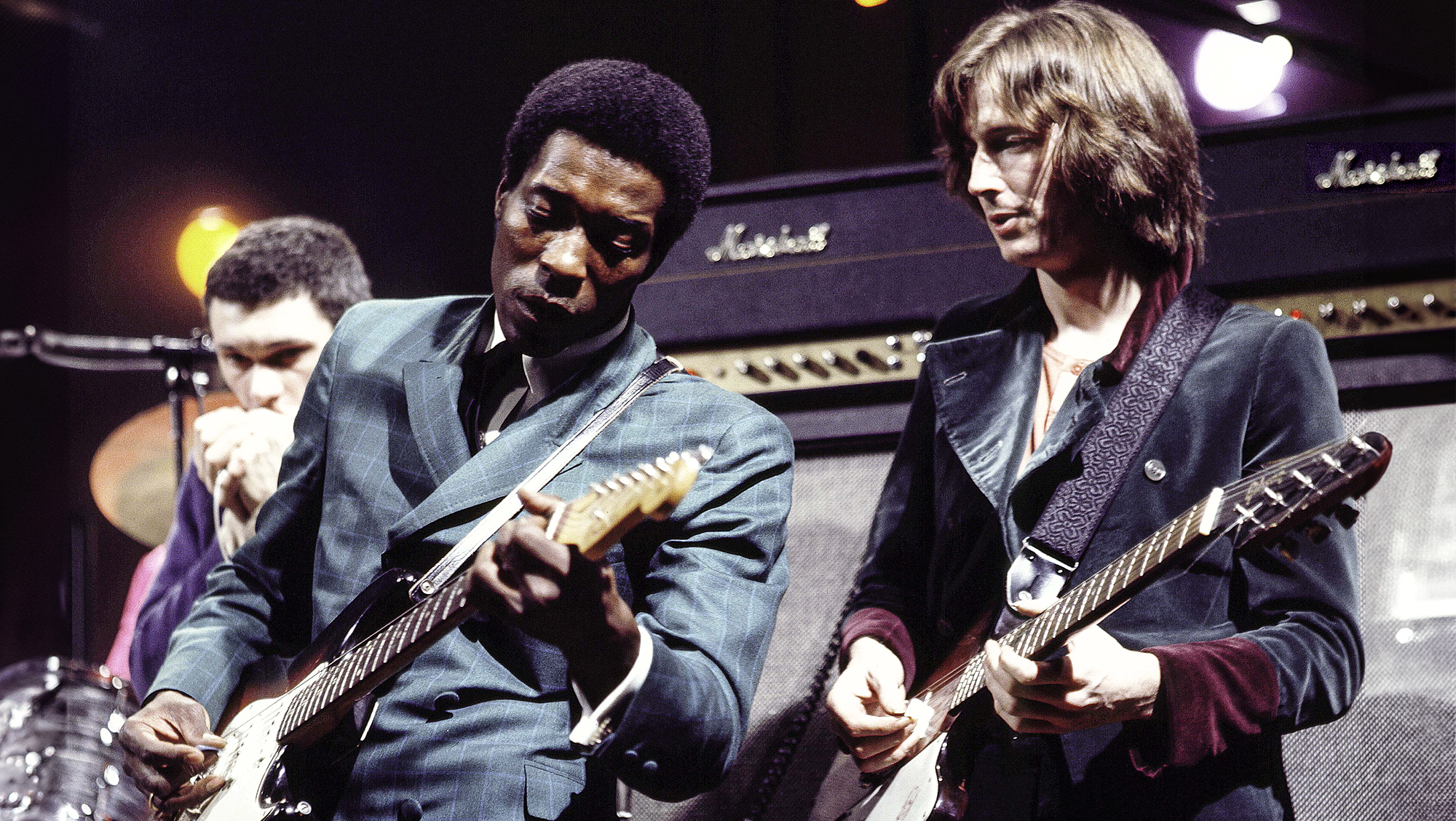Is Victory Amps’ the Duchess V4 a Smaller Footprint Amplifier for the Faithful?
The debate over tube versus solid-state power is not going to end with this review, but here’s what we thought.

Victory Amps and their chief designer, Martin Kidd, have enjoyed a sterling reputation for high-quality British-made boutique amplifiers for nearly a decade. From their stunning aesthetics to the careful selection of tubes, transformers, speakers and voicings, there are reasons Victory amplifiers like The Duchess V40, The Sheriff 22 and the VC35 The Copper Deluxe have won over players like Guthrie Govan, Richie Kotzen, Joe Gore and Chris Buck.
Built (and generally priced) for pros, Victory’s goods surely belong in the top echelon of modern-day amp makers. That said, being a notable maker of Class A tube amplifiers in the age of modelers and profilers may not be the most mixed portfolio an amp company could have.
It’s perhaps to address this new market that Victory last year added The Duchess V4 Guitar Amplifier to its Duchess line, the company’s ode to the dreamy cleans and light overdrives of classic Fender amps.
With essentially the same preamp section you’ll find in the widely admired The Duchess V40 Deluxe full head and the V40H lunchbox head, the V4 follows the same basic design map of Victory’s widely admired unpowered V4 preamp pedals – including the Sheriff, Kraken, Jack and Copper models – if with a slightly bigger form factor, and with its own internal power.
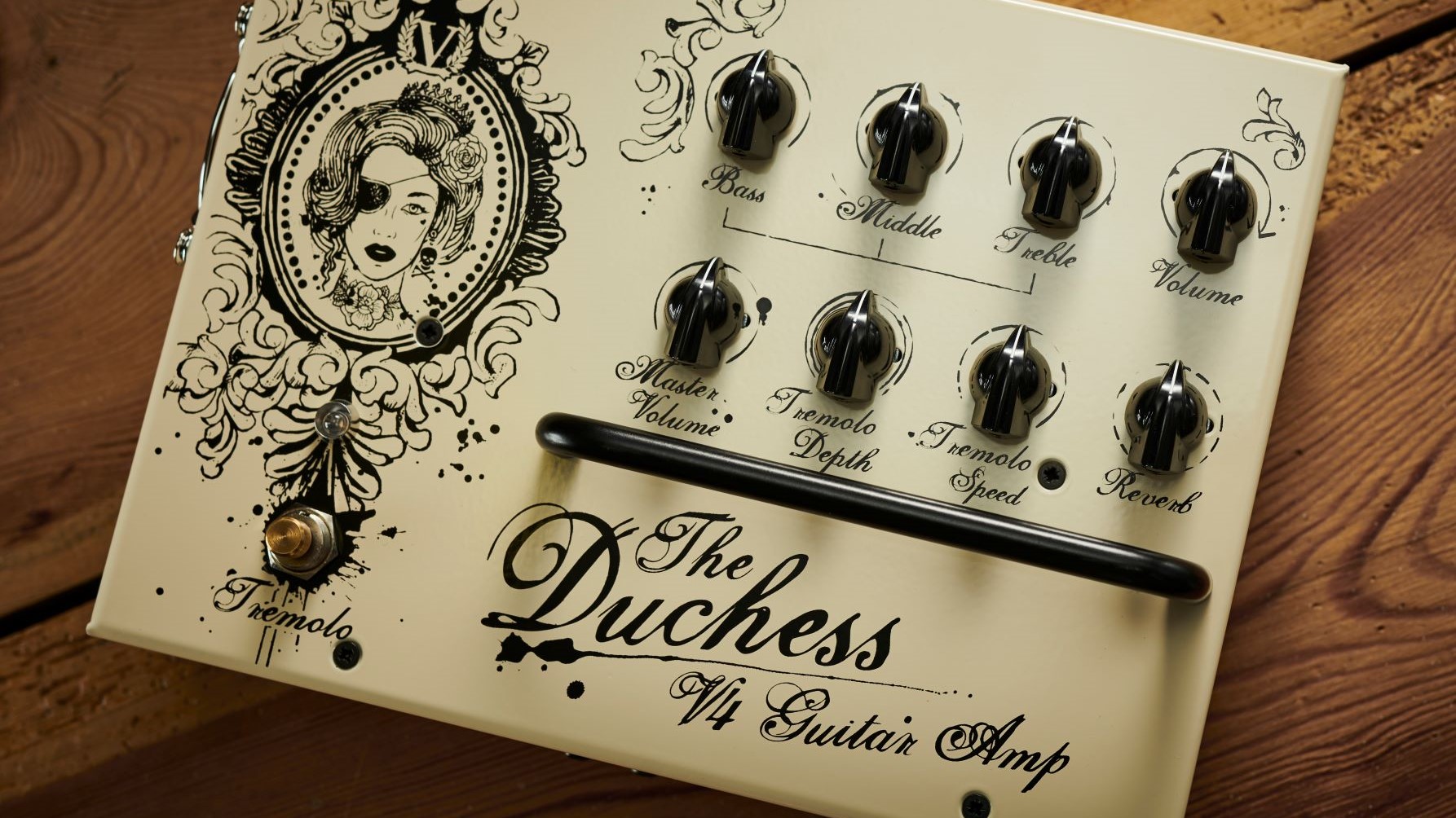
Atop the V4’s powder-coated aluminum chassis, the Duchess script graphics surround a clutch of mini chicken-head knobs that control a tone stack of bass, middle, treble and (preamp) volume. There are also controls for master volume, tremolo depth and speed, and digital reverb.
The back panel sports a speaker out, a line out (bypassing the power section and ideal for direct recording), a low-impedance series effects send and return, a foot-switch output and a guitar input. There’s even a nine-volt DC jack, which can power up to 500mA. (Note that many single pedals are rated for nine-volt 300mA, so be sure not to exceed this limit.)
The industrial design is super cool, and the pedal is light and portable. The digital reverb and tremolo are top-notch, and the preamp has sensational tonal colors.
All the latest guitar news, interviews, lessons, reviews, deals and more, direct to your inbox!

So what’s not to like?
Well, the solid-state power section, specifically, the V4’s 180-watt German-built ICEpower ASW200AS1, the same Class D compact amp design found in powered Kemper modelers, among others.
As with the Kemper PowerHead, the early consensus among many users – and not just old cork-sniffing tube guys – is that something is not quite right with the way ICEpower drives a speaker cabinet.
Scan the comments sections of many a thread on how to power your Profiler, or the many U.K. reviews of the The Duchess V4 itself, and you’ll find the jury is still out. Describing the somewhat brassy, unnatural and hard attack of these ICE amps, some players use the terms pokey, bright and brash, or simply remark, “something seems off.”
As much as I respect Martin Kidd and Victory, I have to agree, and it points to a troubling marketing trend in the industry. Manufacturers love to tout their partly (or completely) solid-state designs, and even their 100-percent digital modelers, as possessing “real tube warmth” or “fat tube saturation.” But as useful as the benefits of these tools may be, only tubes have tube warmth. Anything else is a simulation.
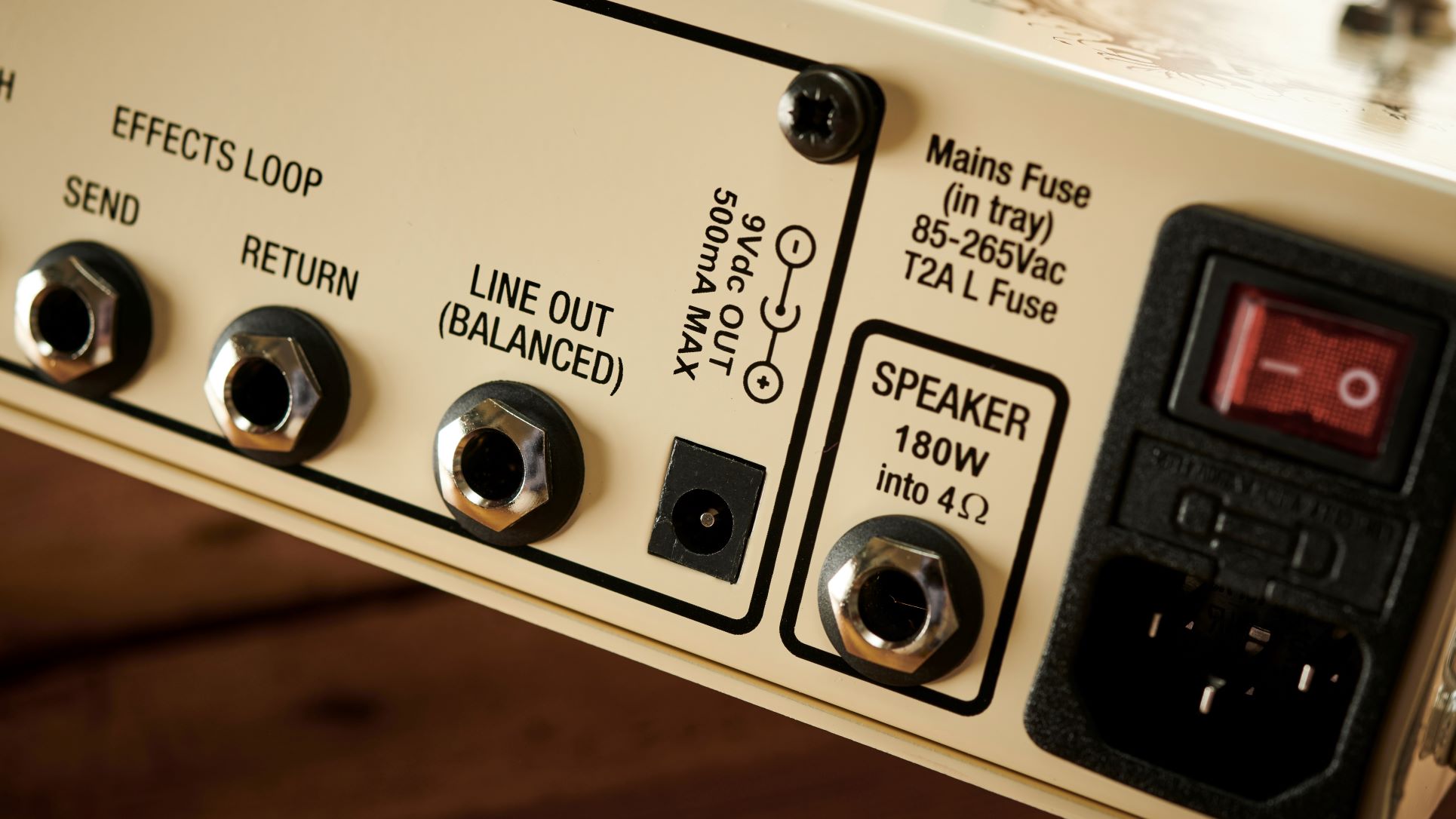
Some modelers and preamp pedals accomplish this extremely well in a direct recording environment, but it’s still a simulation. You may have great preamp tubes at play, but without a tube power-amp delivering those modeler/preamp sounds to a cabinet, it’s not going to be real tube warmth.
The difference isn’t subtle, either, at least not for someone who’s spent a lifetime playing tube amps. If you’ve been playing solid-state gear for years, perhaps you won’t notice the difference at all.
Still, let’s talk about what this amp does well.
Because of its massive clean power, this is a terrific amp for ultra-clean electric guitar tones. We played a Fender American Professional II Jazzmaster through the V4, setting a subtle tremolo and reverb sound, and that big headroom really delivered some nice Grant Green tones and even echoes of Jimmy Wilsey-style lounge twang.
A Jazzmaster, Gretsch or more atypical electric guitar choice are good with the V4, as your Strat, Tele and Les Paul tones are not likely to sound quite the way you’re used to. We suspect the V4 would make a brilliant keyboard amp, too, and running acoustic-electric guitars through it was not unlike plugging into a solid-state acoustic amp like a Henricksen or an AER.
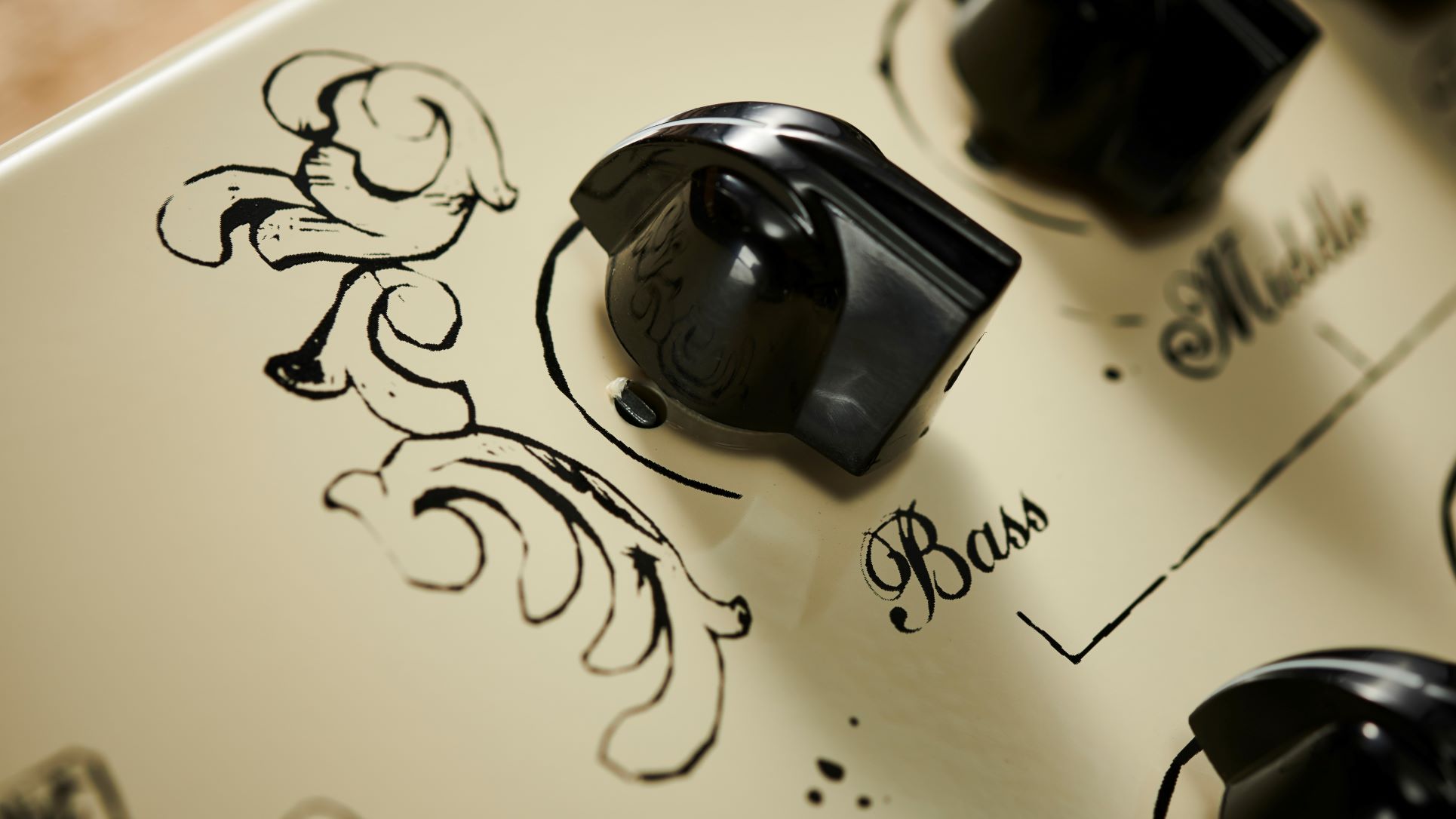
Though some have called The Duchess V4 a “great pedal platform,” we don’t think any gain pedals offset that sonic hardness. Our V4 was paired with a Victory V112 Neo (neodymium) 1x12 cabinet, and Victory was kind enough to send us a more conventional 2x12 V12 VCD cab with Celestion G12M-65 Creambacks, as well, for comparison.
There’s no question the Neo cab, with its Celestion Neo 250 Copperback speaker rated for up to 250 watts, exaggerated that brassy solid-state quality, but it was still evident through the 2x12 as well, though certainly boasting a more natural breakup.
Interestingly, we found the V4 made an excellent direct-recording device. Although it has no built-in cabinet emulation of its own, it sounded great with IRs going straight into a Universal Audio Apollo Twin and into Apple Logic Pro.
Again, this Duchess preamp circuit, with its one Mullard EC900 triode and three Mullard CV4014s, is really stunning. Though the solid-state V4 has no need to match the impedance of your speaker cab, the wattage is reduced significantly as you increase the speaker load. That is, it takes advantage of its full 180 watts through a four-ohm load like the Neo 1x12, but that is reduced to an effective 100 watts into eight ohms and 50 watts into 16 ohms.

Still, these are solid-state watts, not tube watts. It’s just not the same. Plugging the V4 into eight-ohm and 16-ohm cabinets yielded mixed results: The amp sounded diminished to our ears – less power, but less fullness and projection as well – and still had that nagging hard and brassy sound. Even with the preamp volume all the way up to dial in some breakup, it didn’t deliver what we would ever call real tube warmth.
The debate over tube versus solid-state power is not going to end with this review. There are those who will find the portability and versatility of The Duchess V4 worth any sonic trade-offs, and there will be younger players raised on virtual amps who may not hear it as a trade-off at all.
Tone is surely a subjective experience, though with Victory’s well-earned reputation in the world of boutique all-tube amps, we’re not sure gambling with this type of solid-state power is the best objective approach to designing a smaller footprint amplifier for the faithful.
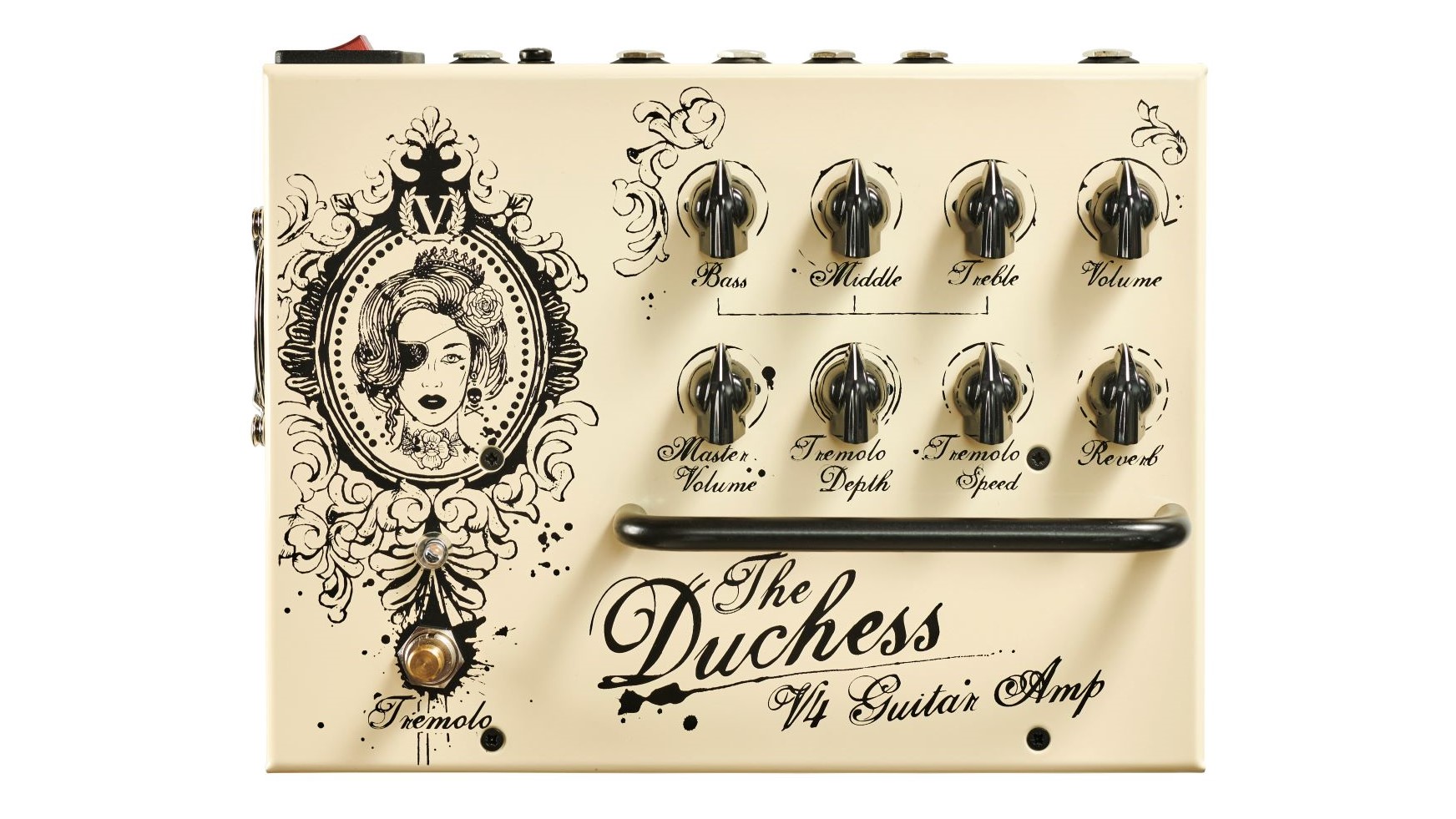
Specifications
- CONTROLS Bass, middle, treble, volume, master volume, tremolo depth/speed, reverb
- POWER 180 watts, ICEpower solid-state
- TUBES Preamp tubes only: 1 x Mullard EC900, 3 x CV4014
- EFFECTS LOOP low-impedance series loop
- EXTRAS Tremolo and Reverb foot switch (optional)
- WEIGHT 3.75 lbs
- BUILT U.K
Purchase the Victory Amps the Duchess V4 Guitar Amp here.
A former editor at Guitar Player and Guitar World, and an ex-member of Humble Pie, Mr. Bungle and French band AIR, author James Volpe Rotondi plays guitar for the acclaimed Led Zeppelin tribute, ZOSO, which The L.A. Times has called “head and shoulders above all other Led Zeppelin tribute bands.” Find JVR on Instagram at @james.volpe.rotondi, on the web at JVRonGTR.com, and look for upcoming tour dates at zosoontour.com
